11 Creative Lead Generation Ideas for 2025 That Work

As businesses continue to navigate the changing world of marketing, lead generation remains a cornerstone of successful strategies. As we look ahead to 2025, it’s clear that staying ahead means adapting to new technologies and approaches. This guide dives into 11 creative lead generation ideas that are shaping the future of how businesses attract and convert potential customers, ensuring your methods are not just current but ahead of the curve.
What is Lead Generation?

Lead generation is the essential first step in a business’s marketing and sales process, involving strategies to attract and convert strangers and prospects into leads, who have expressed interest in your company’s products or services. It forms the groundwork upon which all sales efforts are built, providing the sales team with a pipeline of potential customers.
Understanding the Mechanics of Lead Generation
Lead generation operates through a variety of channels, both online and offline. Online methods may include optimized website content, social media strategies, and digital advertising, while offline methods might encompass direct mail, live events, and networking. The goal is to create touchpoints that invite user engagement and facilitate the collection of data, which can be used to personalize future interactions.
Key Components of Lead Generation:
- Attracting Attention: This involves using targeted marketing campaigns designed to reach your ideal customer demographic through content that resonates with their needs and interests.
- Engaging Prospects: Once attention is captured, the focus shifts to engagement through interactive elements like web forms, chatbots, or compelling calls-to-action that encourage prospects to provide their contact information.
- Conversion Tactics: This stage converts the engaged prospects into leads by persuading them to take an action that officially marks their interest—such as subscribing to a newsletter, downloading a whitepaper, or requesting a product demo.
Why is Lead Generation Important?

Lead generation is fundamentally important as it serves as the initial step in the sales process, setting the stage for acquiring new customers and fostering business growth.
It’s more than just gathering a list of people; it’s about creating targeted, meaningful interactions that can be nurtured over time. Here’s why lead generation is crucial for any business:
Strategic Targeting and Segmentation:
Lead generation allows businesses to tailor their marketing efforts to specific demographic and psychographic segments. This targeted approach ensures that marketing resources are used more efficiently, as campaigns are directed toward individuals who are more likely to be interested in the product or service. By focusing on specific segments, businesses can craft messages that resonate deeply, improving the chances of conversion.
Building a Sales Pipeline:
Effective lead generation strategies help fill the sales pipeline with potential leads. This pipeline is vital for sales teams as it provides a consistent flow of prospects that they can work on converting into paying customers.
A healthy pipeline is also essential for forecasting sales and planning business growth strategies. It ensures that the sales team has clear objectives and a steady workload, contributing to better sales management and revenue prediction.
Enhancing Customer Insights:
Lead generation involves collecting valuable data about prospects. This data can include information on consumer behavior, preferences, and pain points, which can be instrumental in shaping future marketing and product development strategies.
Understanding what drives potential customers helps businesses to not only refine their offerings but also to innovate in ways that meet evolving customer needs.
Cost-Effectiveness:
Generating leads effectively can significantly reduce the cost of customer acquisition. By optimizing lead generation strategies, businesses can attract leads through less expensive means than traditional advertising, such as inbound marketing tactics including SEO, content marketing, and social media engagement.
This not only reduces costs but also attracts higher quality leads who have shown a genuine interest in what the company has to offer.
Long-Term Relationship Building:
Lead generation is not just about immediate sales; it’s also about building long-term relationships. Initiating contact through valuable content or thoughtful engagement can set the foundation for ongoing interactions.
Nurturing these leads through regular communication, personalized offers, and loyalty programs helps to build trust and loyalty, increasing the lifetime value of customers.
Boosting Brand Awareness:
Even when leads do not immediately result in a sale, lead generation contributes to increasing brand awareness and establishing credibility in your market.
Each interaction, whether it’s through a downloaded guide, a newsletter sign-up, or a social media engagement, introduces your brand to potential customers and starts building a relationship that could yield results in the future.
Lead generation is a critical component of a comprehensive marketing strategy. It not only drives sales but also enhances market understanding, improves cost efficiency, and builds the groundwork for lasting customer relationships.
What is a Lead Generation Funnel?
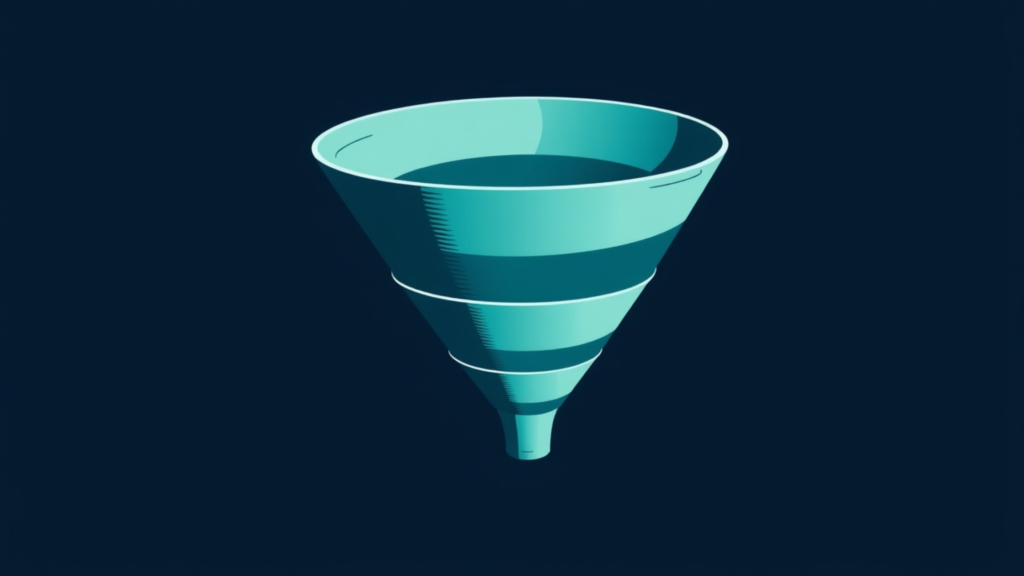
A lead generation funnel is a way to visualize the journey a potential customer goes through, from learning about your company to deciding they might want to buy something from you.
Think of it like a real funnel: at the top, it’s wide because you’re reaching out to lots of people. As they get more interested, they move down the funnel until, at the bottom, you’ve got those who are ready to say “yes” to your product or service.
Here’s why it’s useful and how it works:
Understanding the Journey: The funnel model helps you see how someone goes from just hearing about you to becoming a real customer. This journey is divided into stages:
- Awareness: This is the top of the funnel. Here, potential customers find out you exist. They might see your ads, hear about you from a friend, or come across your website when browsing online.
- Interest: Now they know you, and something has caught their eye. They start looking at what you offer, maybe reading your blog posts, checking out your products, or following you on social media.
- Decision: At this point, they’re thinking seriously about buying from you. They might compare you with others, look at your prices, and think about whether what you offer is right for them.
- Action: This is the bottom of the funnel where they decide to buy. They might fill out a contact form, sign up for a trial, or actually purchase a product.
Helps with Marketing Efforts:
Understanding each stage of the funnel can help you figure out what to do to keep potential customers moving through it. For example, if lots of people know about you but aren’t looking more deeply, you might need to create more interesting content or offer more information about your products.
Gives Valuable Insights:
The funnel also shows you where you’re losing potential customers. Maybe many are interested at first but don’t make a purchase. This could mean you need to improve something, like having better customer service or offering more helpful information at the decision stage.
Improving Conversion:
By analyzing how well your funnel is working, you can try different strategies to improve it. This could mean changing your ads, using different social media platforms, or offering specials to see if more people move from knowing about you to buying from you.
In simple terms, a lead generation funnel isn’t just about getting more people to know your business; it’s about turning those people into happy customers who want to buy what you’re selling. By understanding and managing this funnel, you can make smarter choices that help grow your business.
11 Creative Lead Generation Ideas for 2025
1. AI-Driven Hyper-Personalization

How It Works:
AI-driven hyper-personalization utilizes machine learning to analyze vast amounts of customer data, including past behavior, preferences, and engagement history. This data is then used to tailor marketing messages and offers in real-time, providing a highly personalized customer experience.
Example:
Amazon excels in AI-driven personalization, employing algorithms to recommend products based on browsing and purchasing history, which drives about 35% of its sales.
Implementation Steps:
- Deploy AI analytics tools like Adobe Sensei to gather and analyze customer interaction data.
- Use insights to create dynamic content that adjusts to user interactions in real-time.
- Integrate AI-powered chatbots like Drift or Intercom to provide personalized support and product recommendations.
Benefits:
- Enhanced customer engagement through tailored experiences.
- Increased conversion rates due to relevant and timely offers.
- Higher customer retention through improved satisfaction.
2. Interactive Content Experiences

How It Works:
Interactive content involves tools such as quizzes, polls, and calculators that engage users by encouraging participation. This not only enhances the user experience but also collects data on preferences and interests, helping qualify leads.
Example:
BuzzFeed has mastered the use of interactive quizzes to engage users, with some quizzes receiving millions of completions and driving significant traffic to their site.
Implementation Steps:
- Design interactive quizzes using tools like Outgrow to aid in product selection or problem-solving.
- Create engaging, data-driven infographics with Visme that users can manipulate.
- Develop detailed assessments that offer personalized feedback or recommendations.
Benefits:
- Increases user engagement and time spent on site.
- Provides valuable insights into customer preferences.
- Helps in lead qualification by capturing user data and responses.
3. Video Marketing with a Twist

How It Works:
This strategy revitalizes traditional video content by embedding interactive elements such as clickable links, embedded forms, and shoppable features directly into videos, making them a more powerful tool for engagement and conversion.
Example:
IKEA implemented interactive video tutorials for furniture assembly, where users can click on tools and parts directly in the video to see more details or purchase them, significantly enhancing user engagement and providing a seamless shopping experience.
Implementation Steps:
- Utilize platforms like Wistia or Brightcove to create shoppable and interactive video content.
- Embed real-time Q&A sessions within live video streams to engage viewers.
- Incorporate interactive tutorials that guide users through product features or setup processes.
Benefits:
- Drives higher engagement by making videos more interactive and engaging.
- Increases direct sales capabilities within video content.
- Enhances customer education and satisfaction with interactive tutorials.
4. AI-Powered Lead Scoring and Qualification
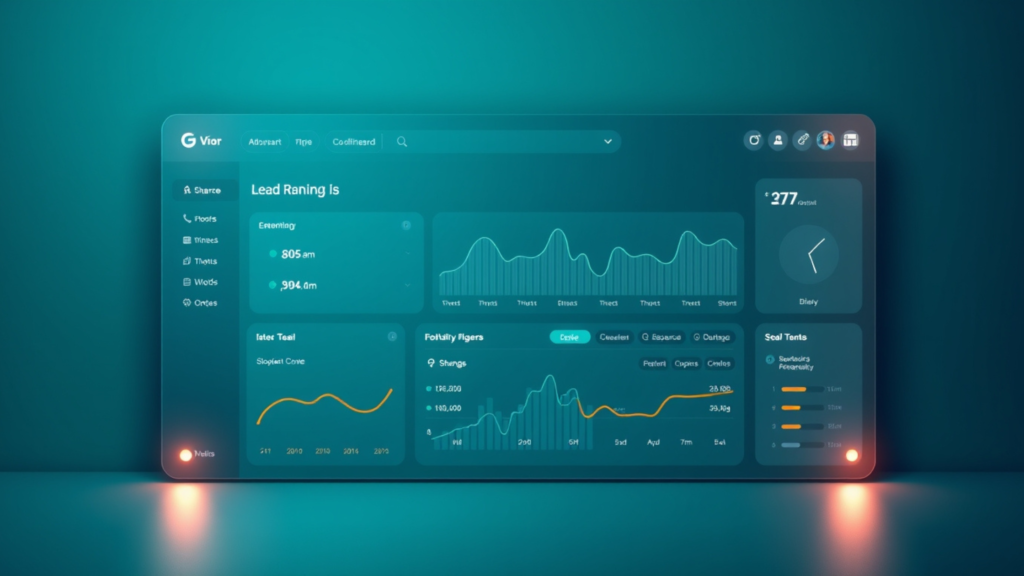
How It Works:
AI-powered lead scoring uses machine learning algorithms to analyze lead data—such as website activity, engagement levels, and demographic information—to score and prioritize leads based on their likelihood to convert.
Example:
Salesforce uses AI to enhance its lead scoring capabilities, providing users with scores that reflect the potential of each lead, based on comprehensive behavioral data and interaction history.
Implementation Steps:
- Implement AI-based tools like Salesforce Einstein to automate lead scoring processes.
- Define parameters for scoring based on lead behavior and interaction data.
- Integrate AI scoring with CRM systems to streamline follow-up and prioritization.
Benefits:
- Improves efficiency in lead management by prioritizing high-potential leads.
- Increases conversion rates through targeted follow-up strategies.
- Reduces time and resources spent on low-quality leads.
5. Virtual and Augmented Reality Experiences

How It Works:
VR and AR technologies create immersive experiences that allow customers to interact with products or services in a virtual environment, enhancing engagement and providing a unique way to experience offerings before purchasing.
Example:
Lowe’s uses AR in its app to let customers visualize how furniture and appliances would look in their actual living spaces, driving higher engagement and informed purchasing decisions.
Implementation Steps:
- Develop AR applications using platforms like ARKit or ARCore that allow users to visualize products in their own space.
- Create virtual showrooms where customers can explore products or features in a detailed, immersive environment.
- Host virtual reality trade shows or product demos that customers can attend from anywhere.
Benefits:
- Provides a unique and engaging way for customers to interact with products.
- Helps reduce uncertainty in the buying process, leading to fewer returns.
- Enhances brand engagement and loyalty through innovative experiences.
6. Social Media Listening and Intent-Based Marketing
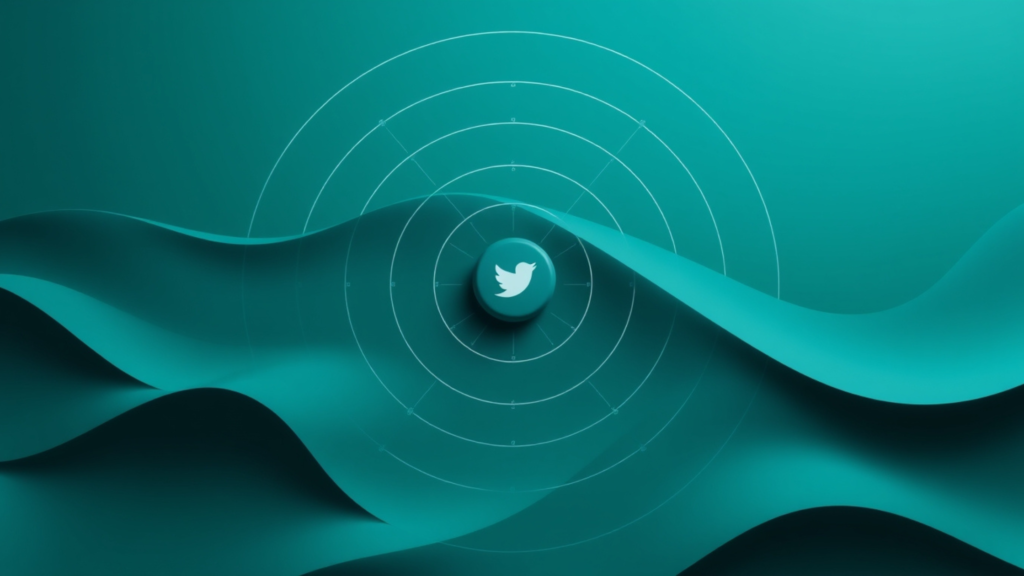
How It Works:
This strategy involves using social media listening tools to monitor and analyze conversations around specific topics, brands, or industries, identifying potential leads based on their demonstrated interest or intent.
Example:
Nike leverages social media listening to gauge customer sentiment and preferences, allowing them to tailor marketing campaigns that resonate deeply with their audience, resulting in increased brand loyalty and sales.
Implementation Steps:
- Employ tools like Mention or Brand24 to track and analyze social media mentions and keywords.
- Analyze user behavior and engagement patterns to identify high-intent prospects.
- Create targeted content and personalized offers based on the insights gained from social listening.
Benefits:
- Allows for real-time response to customer inquiries and issues, enhancing brand reputation.
- Provides deep insights into customer preferences and behavior, guiding more effective marketing strategies.
- Enables highly targeted marketing that reaches potential leads at the moment of highest interest.
7. Omnichannel Lead Nurturing
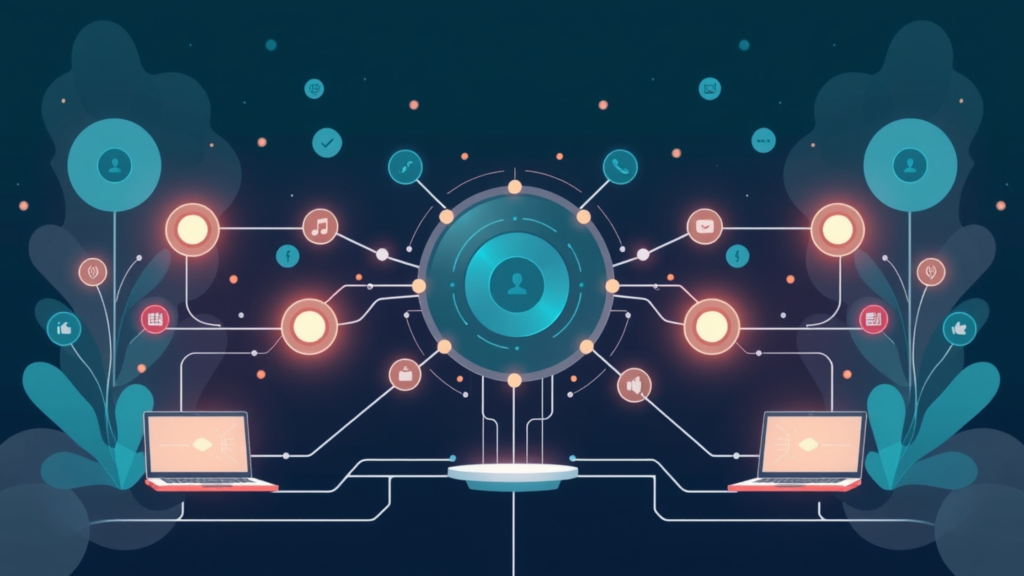
How It Works:
Omnichannel lead nurturing integrates multiple channels—such as email, social media, mobile apps, and websites—to provide a unified and personalized experience for leads throughout their buying journey.
Example:
Starbucks uses its mobile app in conjunction with its loyalty program to offer personalized discounts and recommendations based on previous purchases, effectively nurturing leads and encouraging repeat business.
Implementation Steps:
- Develop a cohesive strategy that integrates all channels where your leads are active.
- Use AI systems to maintain consistency and personalization across all touchpoints.
- Regularly update content and messaging to reflect interactions and feedback from leads.
Benefits:
- Provides a seamless customer experience across all platforms, enhancing satisfaction and loyalty.
- Ensures consistent messaging, which builds trust and aids in brand recognition.
- Increases the effectiveness of nurturing campaigns, leading to higher conversion rates.
8. Influencer Collaborations and User-Generated Content

How It Works:
This strategy leverages the credibility and reach of influencers, along with the authenticity of user-generated content, to create trust and engagement among potential leads.
Example:
Glossier has successfully built its brand largely through influencer partnerships and a strong emphasis on user-generated content, which has resonated with a wide audience and fostered a loyal customer base.
Implementation Steps:
- Identify and partner with influencers who align with your brand values and have engagement with your target demographic.
- Encourage and incentivize customers to share their own content featuring your products.
- Repurpose high-quality user-generated content across your marketing channels for authentic engagement.
Benefits:
- Builds credibility and trust more effectively than traditional advertising.
- Engages a broader audience through the networks of influencers.
- Enhances brand loyalty and advocacy through customer involvement in content creation.
9. AI-Generated Content and Personalized Emails

How It Works:
AI-generated content and personalized emails use advanced algorithms to create content and email campaigns that are tailored to the interests and behaviors of individual leads, increasing relevance and engagement.
Example:
Netflix uses AI to generate personalized email recommendations based on viewing habits, significantly increasing user engagement and retention.
Implementation Steps:
- Utilize AI content generation tools like Persado or Phrasee to craft personalized email content.
- Implement dynamic content segments in emails that adapt to user interactions and preferences.
- Conduct A/B testing to refine subject lines and email content for optimal engagement.
Benefits:
- Increases open and click-through rates through highly relevant, personalized email content.
- Saves time and resources in content creation while maintaining high quality and relevance.
- Improves lead engagement and progression through the sales funnel with tailored communication.
10. Gamification and Interactive Challenges

How It Works:
Gamification incorporates game-like elements such as points, badges, and leaderboards into marketing activities to engage and motivate leads, encouraging interaction and data sharing.
Example:
Duolingo’s use of gamification through its language learning progression system motivates users to continue their lessons daily, enhancing retention and engagement.
Implementation Steps:
- Design interactive challenges that are relevant to your products or services to educate and engage potential customers.
- Develop a rewards system that incentivizes continued engagement and lead sharing.
- Integrate these gamified elements into your website, app, or social media platforms to maximize visibility and participation.
Benefits:
- Makes the lead generation process fun and engaging, increasing participation and data collection.
- Encourages repeated interactions with the brand, building familiarity and loyalty.
- Facilitates the collection of behavioral data that can be used to enhance future marketing efforts.
11. Voice and Visual Search Optimization

How It Works:
Optimizing for voice and visual search involves structuring content and using SEO practices that cater to natural language queries and image recognition technologies. As these technologies become more integrated into search behaviors, ensuring content is discoverable through these means is essential.
Example:
Domino’s Pizza has optimized for voice search allowing customers to order pizza via voice commands through Alexa, enhancing user convenience and setting a benchmark in voice commerce.
Implementation Steps:
- Optimize content for natural language queries common in voice search, focusing on conversational keywords and phrases.
- Use schema markup to help search engines understand and categorize content context, improving visibility in voice and visual search results.
- Ensure images are high-quality, properly tagged, and optimized for visual search engines, with descriptive filenames and alt text that improve indexing.
Benefits:
- Captures a growing segment of users who rely on voice and visual search for quick, convenient information retrieval.
- Enhances user experience by making interactions simpler and more natural.
- Improves visibility and accessibility of products or services through new and emerging search platforms.
Key Lead Generation Tools Comparison
Here’s a comparison chart that outlines key features, pricing, and unique aspects of each lead generation tool, making it easier for businesses to decide which tool fits their specific requirements:
| Tool Name | Key Features | Pricing | Best For |
| HubSpot | – All-in-one marketing suite | Starts at $50/month | Comprehensive inbound marketing strategies |
| – CRM integration | |||
| – Advanced analytics | |||
| Marketo | – Lead nurturing and scoring | Contact for quote | Large-scale marketing automation |
| – Cross-channel marketing | |||
| – Robust integration capabilities | |||
| Unbounce | – Landing page builder | Starts at $80/month | Creating and testing landing pages |
| – Dynamic text replacement for PPC | |||
| – A/B testing | |||
| Leadfeeder | – Website visitor identification | Starts at $55/month | B2B companies tracking anonymous visitors |
| – CRM integration | |||
| – Email marketing integration | |||
| Drift | – AI-driven chatbot | Starts at $400/month | Conversational marketing and sales |
| – Real-time customer data | |||
| – In-app and email notifications | |||
| OptinMonster | – Targeted campaigns based on user behavior | Starts at $9/month | Highly customizable lead generation forms |
| – Exit-intent technology | |||
| – A/B split testing |
Features and Benefits of Each Tool
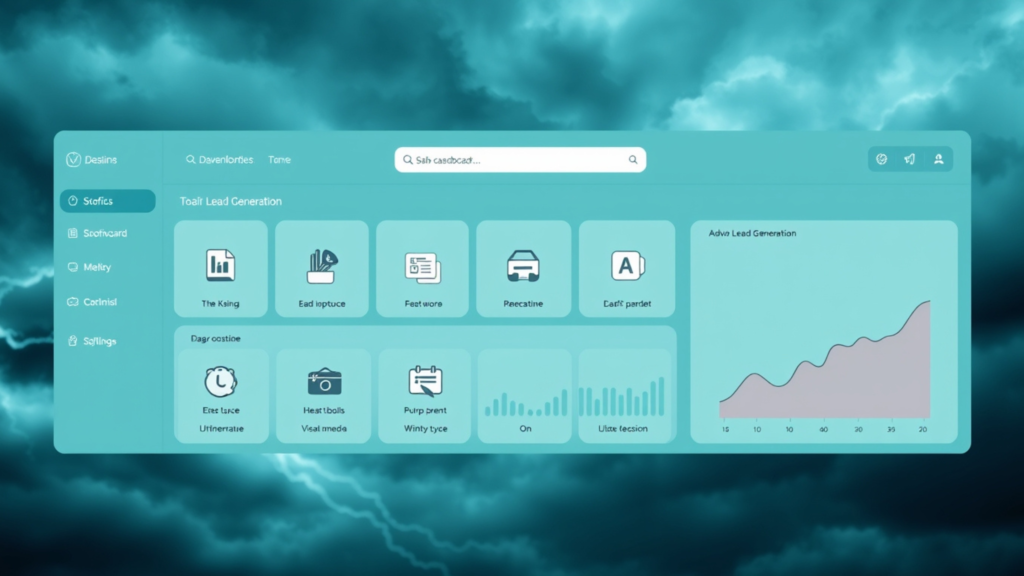
HubSpot:
- Features: Offers a robust suite of tools that include email marketing, lead management, SEO tools, content management, and analytics.
- Benefits: HubSpot is ideal for businesses looking for an all-encompassing solution to handle all aspects of their marketing funnel, with strong analytics to track every stage of the lead conversion process.
Marketo:
- Features: Known for its powerful automation features that assist in campaign management, lead nurturing, and detailed programmatic advertising.
- Benefits: Best suited for larger organizations that require detailed reporting and analytics across multiple marketing channels.
Unbounce:
- Features: Specializes in creating, deploying, and testing custom landing pages with ease, featuring a drag-and-drop builder and dynamic text replacement for PPC campaigns.
- Benefits: Great for businesses focusing heavily on optimizing conversion rates through customized landing pages and A/B testing.
Leadfeeder:
- Features: Identifies anonymous web visitors by linking IP addresses to specific companies, integrates well with CRM systems, and tracks email campaigns.
- Benefits: Excellent for B2B businesses looking to enhance lead qualification by understanding more about the companies visiting their site.
Drift:
- Features: Provides AI-driven chatbots for automated customer interaction on websites, capable of qualifying leads and booking meetings directly.
- Benefits: Perfect for companies aiming to capitalize on real-time lead interaction and conversion through conversational marketing.
OptinMonster:
- Features: Offers targeted popup forms, floating bars, and full-screen welcome mats that are triggered by user behavior such as exit-intent.
- Benefits: An effective tool for small to medium-sized businesses looking to increase engagement and capture leads through personalized offers and behaviors-based triggers.
By evaluating these tools against your business needs, budget, and specific lead generation goals, you can choose the one that best aligns with your strategic objectives, ensuring a more streamlined and effective lead generation process.
Choosing the Right Lead Generation Agency
Selecting the right lead generation agency is a pivotal decision for any business looking to enhance its lead generation efforts. An effective agency can dramatically increase the quality and quantity of leads, driving growth and boosting ROI. Here are more detailed factors to consider when evaluating potential agencies:

- Track Record and Reputation: Assess the agency’s history of success with businesses in your industry. Look for case studies, client testimonials, and reviews that demonstrate their capability and reliability.
- Strategic Approach: Evaluate whether the agency uses a data-driven approach to lead generation. They should be able to articulate a clear strategy that includes identifying target audiences, setting measurable goals, and choosing the appropriate channels and tactics.
- Technology and Tools: Ensure the agency is proficient with the latest technologies and tools necessary for effective lead generation. This includes everything from advanced CRM solutions to analytics and automation tools.
- Communication and Reporting: The agency should offer transparent communication and regular reporting to keep you informed of campaign progress and results. Effective communication is key to adjusting strategies and achieving desired outcomes.
How Saletancy Can Help You with B2B Lead Generation
Saletancy is your go-to partner for boosting your B2B lead generation. We understand every business is different, and we’re ready to create a plan just right for you. Here’s how we can help:
- Reaching the Right People: We’re experts at finding the perfect potential customers for you. We make sure that the people we target are the ones most likely to be interested in what you offer, making every lead count.
- Custom Plans: We listen to what you need and tailor our approach to fit your goals. Whether you’re looking to break into a new market or grow in your current one, we’re here to plan a strategy that hits the mark.
- Smart Use of Data: Our team uses the latest tools to watch over your campaigns and tweak them for the best results. We keep an eye on the data to make sure we’re on the right track.
- Expert Team: Our team knows the ins and outs of B2B sales. They use their skills to connect with key people effectively, making sure your message is heard by the right ears.
- All-in-One Service: From the first step to the last, we handle everything. We help you attract interest, nurture potential customers, and get them ready to say yes to your service or product.
What Our Clients Say:
“We hired Saletancy for their B2B lead generation and appointment setting services, and they were exceptional. The quality of leads generated surpassed our expectations, and their ability to set appointments efficiently was impressive.” – Urvi Handoo, Head of Business Development @ Manras Technologies
Ready to Grow Your Business with Saletancy?
Let’s make your lead generation process a big success. Contact Saletancy today.
FAQs:
What is B2B Lead Generation?
B2B lead generation is the process businesses use to identify and initiate interest from potential business customers. This involves strategies to attract and gather information from prospective clients who may be interested in buying products or services from another business.
How Can I Generate Leads Fast?
To generate leads quickly:
- Launch targeted pay-per-click (PPC) advertising campaigns.
- Use social media platforms for promotions and interactive contests.
- Optimize your website for conversions.
- Implement email marketing campaigns to re-engage past visitors.
What is the Best Strategy for Lead Generation?
The best strategy for lead generation is a multi-channel approach that includes:
- Content marketing to provide value and attract organic traffic.
- Email marketing for nurturing leads.
- SEO to increase organic search visibility.
- Social media marketing to engage with potential customers directly.
How to Create Lead Generation?
To create an effective lead generation process:
- Identify your target audience.
- Develop engaging content that addresses their needs and challenges.
- Use optimized landing pages to capture lead information.
- Employ automation tools to nurture leads through the sales funnel.
What are Lead Generation Services?
Lead generation services are third-party offerings that help businesses generate and collect potential customer data. These services can include email list building, appointment setting, lead nurturing campaigns, and providing sales-ready leads.
How to Get Leads in B2B?
To generate leads in B2B:
- Attend industry networking events and conferences.
- Leverage LinkedIn for connecting and sharing valuable content.
- Use account-based marketing strategies to target specific companies.
- Offer free webinars or whitepapers that require sign-up to access.
Which Ads are Best for Lead Generation?
The best ads for lead generation often include:
- Facebook lead ads, which are designed specifically for collecting lead information within the platform.
- Google Ads, using targeted keywords related to your products or services.
- LinkedIn ads, particularly for B2B companies, to target professionals and decision-makers.
What is the Best Source for Leads?
The best source for leads will vary by industry, but generally:
- Referrals from existing customers often provide high-quality leads.
- Social media platforms can be effective, particularly LinkedIn for B2B.
- SEO drives organic traffic to your site, converting visitors into leads through optimized content and landing pages.
How Do I Identify My Target Audience for Lead Generation?
To identify your target audience:
- Analyze your current customer base and identify common characteristics.
- Conduct market research to understand demographic and psychographic data.
- Use analytics tools to track website and social media engagement.
What are the Most Common Challenges of Lead Generation?
Common challenges include:
- Generating high-quality leads that are likely to convert.
- Effectively measuring the ROI of lead generation activities.
- Managing lead data and properly nurturing leads to the point of sale.
- Staying updated with the latest lead generation technologies and trends.